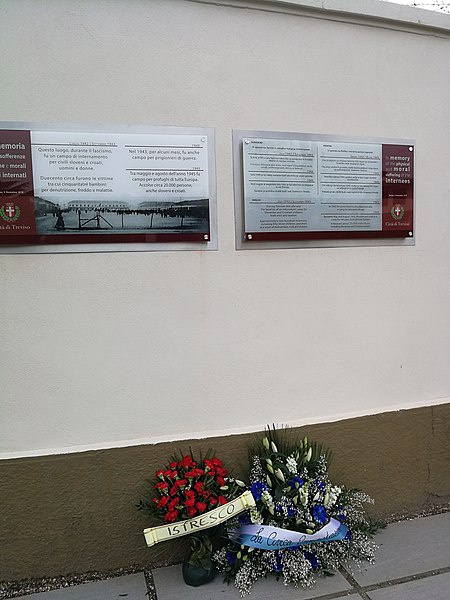Monigo concentration camp
1940s in ItalyItalian concentration campsItalian fascist internment camps in Italy

The Monigo concentration camp was a prison camp opened during World War II aimed at civilian prisoners (mostly Slovenes and Croats). It was located in Monigo, a suburb of the town of Treviso. The camp was active between 1942 and 1943. The total number of inmates is not certain, but is estimated in a total of around 10,000, with an average number of 2,582 prisoners at a time (maximum 3,374). The camp often surpassed its full capacity of 2,400 (as stated by Italian military authorities).
Excerpt from the Wikipedia article Monigo concentration camp (License: CC BY-SA 3.0, Authors, Images).Monigo concentration camp
Strada Feltrina, Treviso San Paolo
Geographical coordinates (GPS) Address Nearby Places Show on map
Geographical coordinates (GPS)
| Latitude | Longitude |
|---|---|
| N 45.6816 ° | E 12.2078 ° |
Address
Strada Feltrina 99
31100 Treviso, San Paolo
Veneto, Italy
Open on Google Maps








